
Station Name: HUNDRED END [Source:Tony Graham &
Paul Wright]
end_old10.jpg) Hundred End station looking south from the down (towards Preston) platform in the 1950s. The rear of a Southport Chapel Street train can be seen.
 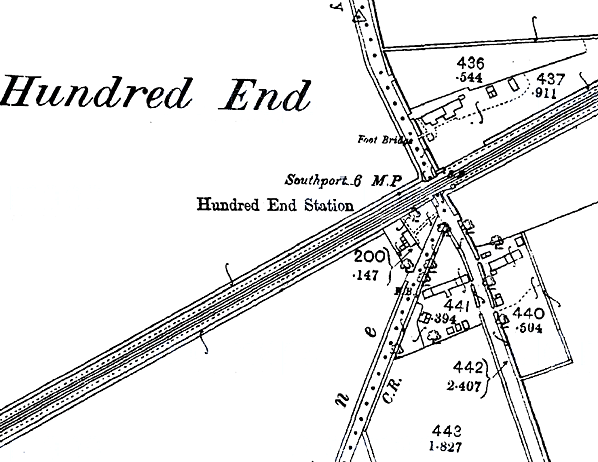 1893 1:2,500 OS map. This map shows Hundred End station as it was before it was altered in 1895. The station was very basic having only short platforms and no goods yard. There was also no signal box at this time.
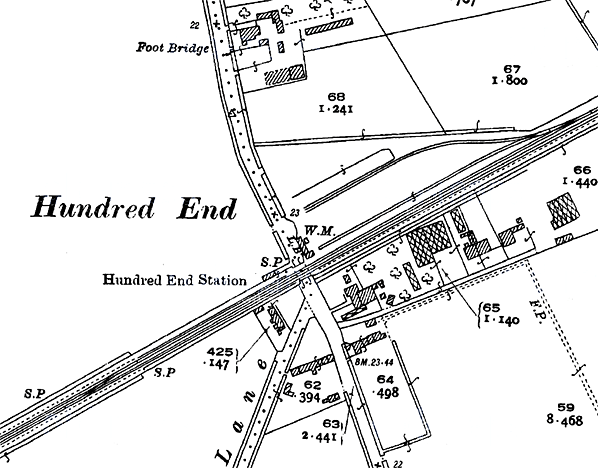 1931 1:2,500 OS map.On this map Hundred End station is shown in its enlarged form. It has waiting rooms on the extended platforms and a ticket office on the opposite side of the road adjacent to the signal box which was also a later addition. The station goods yard of 1895 is also shown.
end_old19.jpg) The north-east end of Hundred End station in the early 1950s. The station was a basic affair; a simple wooden shed provided waiting facilities on the up (towards Southport) platform. Passengers crossed the line by the level crossing which carried a public road over the line. Access to the platforms was by gates that led from the road on each side of the level crossing. The booking office was on the other side of the road from the platforms. It can be seen in the picture behind the signal box. On the far side of the crossing to the left the station goods yard can be seen.
Copyright photo from Stations UK end_old9.jpg) A Preston train departs from Hundred End station in the early 1960s. The Hundred End Lane level crossing can clearly be seen. To the right can be seen the signal box that controlled the crossing .Built in December 1937 at Crewe Works, this William Stanier designed 2-6-2, class 3 tank, was a development of the Fowlere tanks, first carried the number 195. It received the '40' prefix at nationalisation when allocated to 25G, Farnley Junction shed and worked until withdrawal from 27C, Southport Shed on 25.11.1961 and scrapped by Looms of Spondon in September 1963.
end_old12.jpg) The booking office at Hundred End was a simple timber structure to the rear of the signal box. It is seen to the left in this picture from the early 1960s looking south. After purchasing a ticket, passengers had to cross the road as the platforms were on the other side out of view to the right. The picture perfectly shows the sleepy rural nature of Hundred End which could never have been a very busy station.
Photo by Gordon Howarth end_old8.jpg) Hundred End station looking south-west in 1963, a year after it had closed. The wooden waiting shelter on the up (Southport direction) platform was still standing at this time and passenger services running between Southport and Preston were still passing through.
Photo from John Mann collection and Stations UK
end_old18.jpg)
The fireman of Lostock Hall's Stanier 2-6-4 tank No. 42484 temporarily ceases in his labours to take a quiet moment for reflection upon the derelict and overgrown timber and ash platforms of the former Hundred End station, as the 10-12 Preston - Southport rumbles through in August 1964. Notice here the original L&YR copper oil lamps, amazingly still in-situ on their cast-iron standards, standing gaunt against the skyline some two years after they last cast their feeble flickering shadows along these remote, windswept and very lonely platforms
Hundred End station looking south-west in August 1964 as the 12:40 am Southport Chapel Street to Preston service hauled by ex-LMS locomotive 42296 passes through. Although the station had been closed for more than two years it still retained its lamps. With just 12 months service left, this Fairburn Tank was built in 1947, just before Nationalisation. It was allocated to 25F, Low Moor Shed until November 1959, when it was moved to 87E, Landore. April 1960 saw it reallocated to 24C, Lostock Hall its final shed, from where it was withdrawn in July 1965 and scrapped by Drapers of Hull in December
Photo by David Hampson )end5.jpg) Looking south-west at the site of Hundred End station in August 1984 from the site of the level crossing. The property occupies the station site.
Photo by John Mann end2.jpg) Looking south-west at the site of Hundred End stations platforms in July 2011. The bungalow seen in the picture sits on the trackbed of the line and its gardens occupy the site of the station's platforms. The road in the foreground had existed when the station was in use and crossed the line by means of a level crossing.
Photo by Paul Wright  Home
Page Home
Page
|
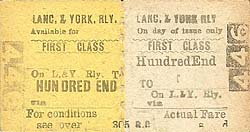

3.jpg)
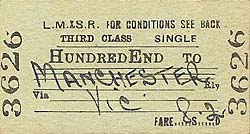

4.jpg)
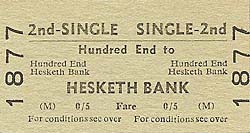
end_old2.jpg)
end_old_thumb1.jpg)
end_old_thumb13.jpg)
end_old_thumb7.jpg)
end_old_thumb11.jpg)
end_old_thumb3.jpg)
end_old_thumb4.jpg)
end_old_thumb5.jpg)
end_thumb1.jpg)
end_thumb3.jpg)
end_thumb4.jpg)